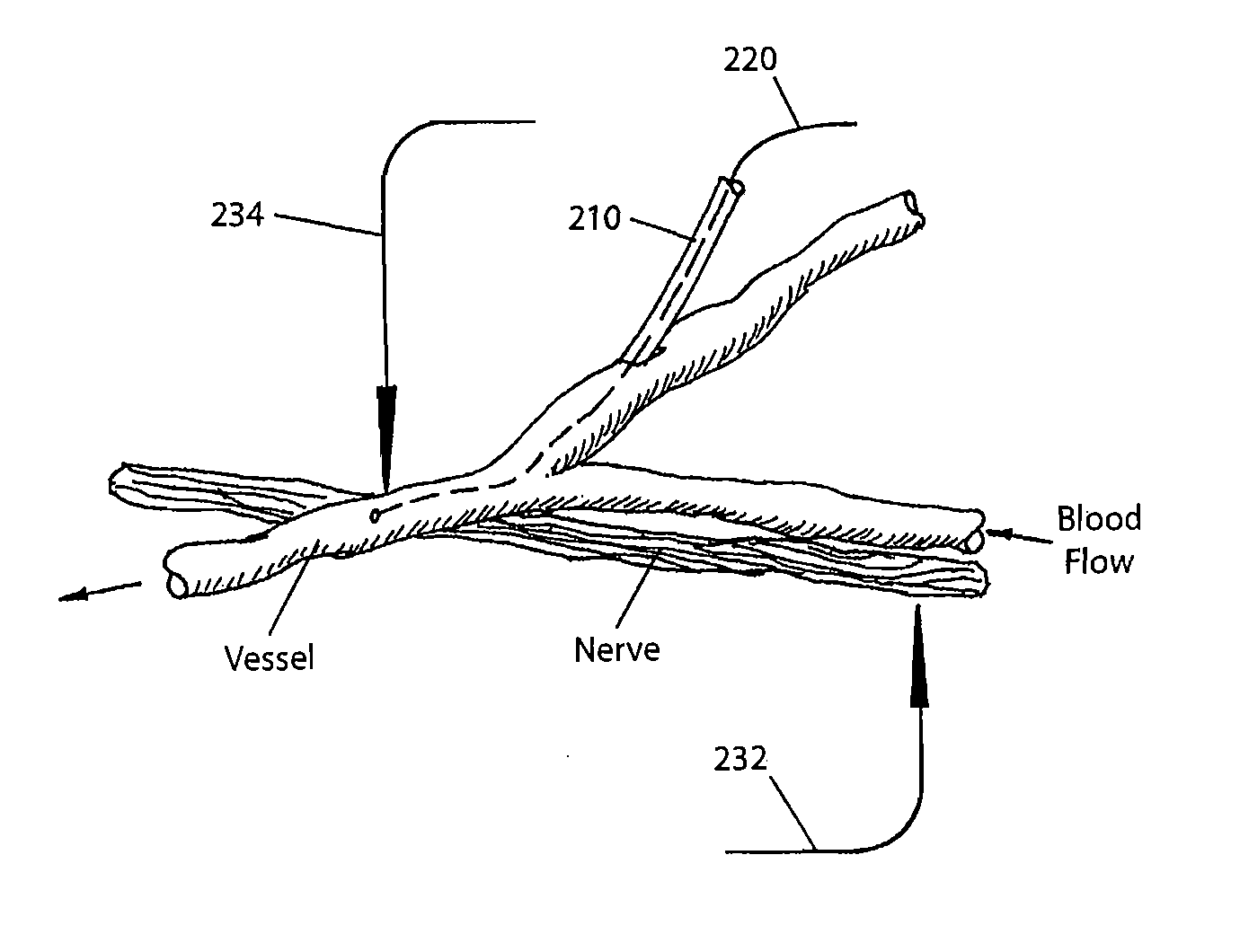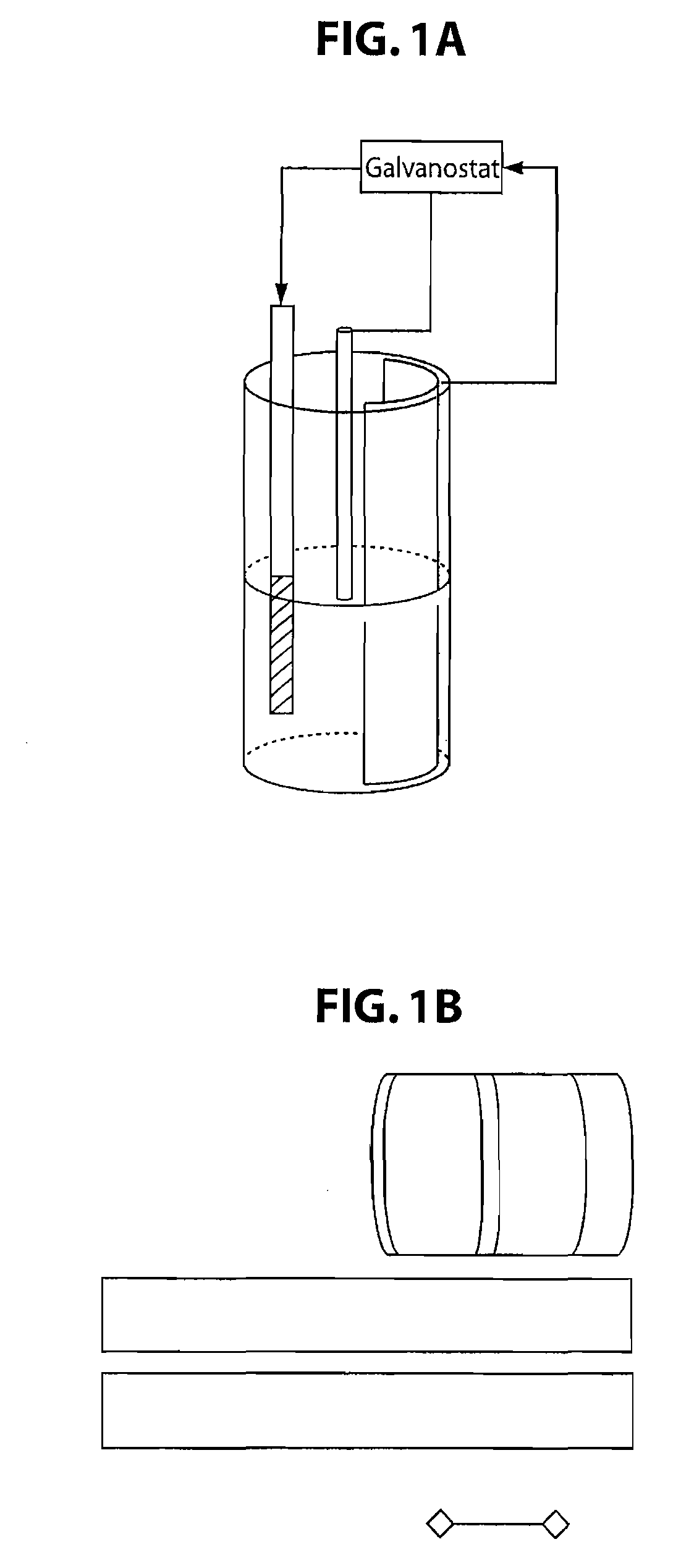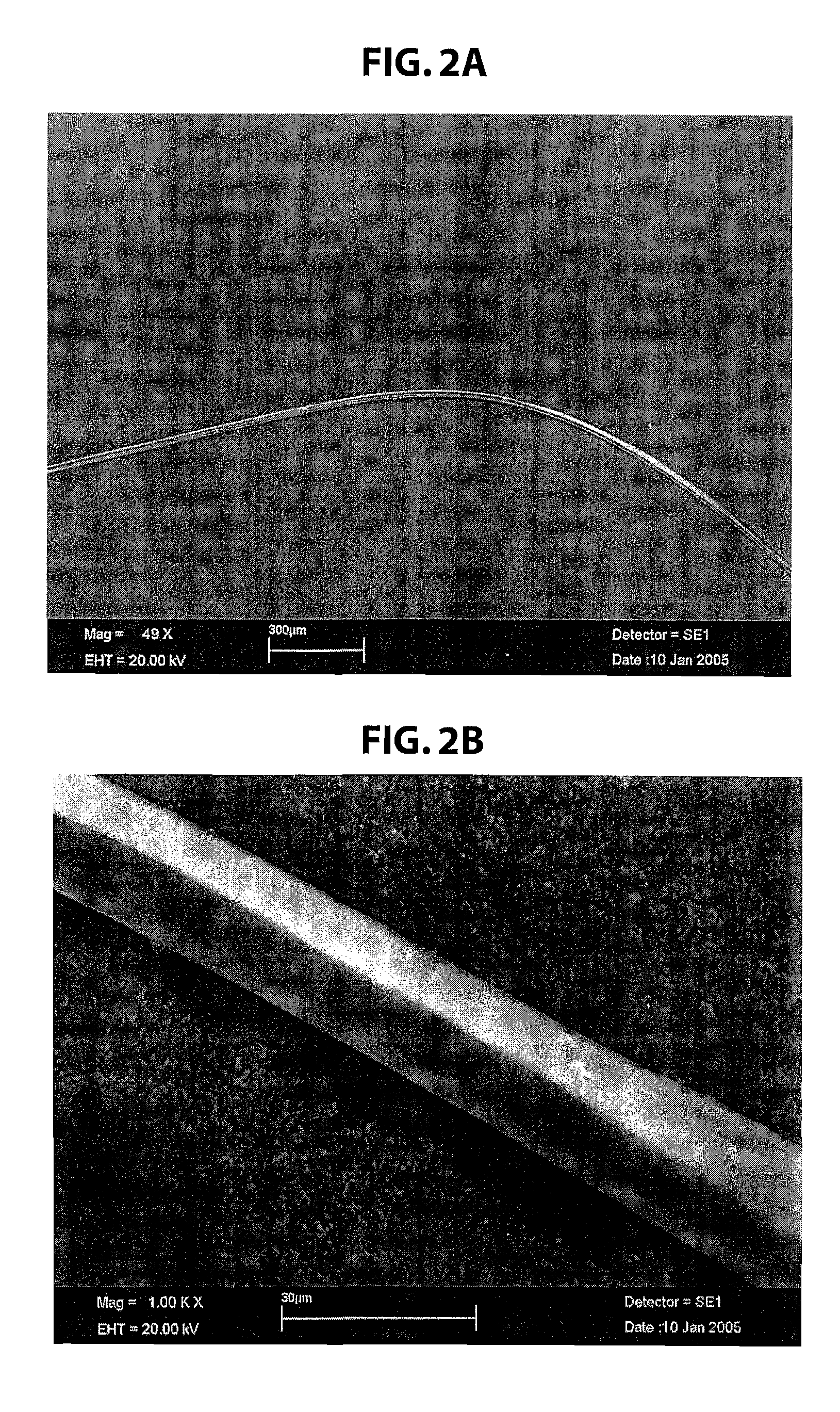Conducting polymer nanowire brain-machine interface systems and methods
a technology of polymer nanowires and brain-machine interfaces, applied in the field of brain-machine interface systems and methods, can solve the problems of limiting the interface of most modern devices to the human body, the brain-machine interface will likely become the major stumbling block to robust and rapid communication with such systems, and the development of brain-machine interfaces has not been as impressive, so as to achieve longitudinal conductivity, not disrupt brain activity, and small size
- Summary
- Abstract
- Description
- Claims
- Application Information
AI Technical Summary
Benefits of technology
Problems solved by technology
Method used
Image
Examples
Embodiment Construction
[0034]The present invention provides a conducting polymer nanowire which can be utilized in a brain-machine interface. The preparation of the nanowire may optionally comprise coating a substrate with an insulating polymer, coating the substrate or the substrate coated with insulating polymer with metallic or conducting backing layer by conventional methods, electrochemically coating the substrate or metal coated substrate with a polymer using a monomer, or a mixture of the monomer and an activator, optionally doping the pre-coated substrate with a doping agent to obtain the conducting polymer nanowire.
[0035]For most applications, the conducting polymer nanowires are typically provided with an insulating layer which extends along the length of the nanowires up to, but not including the tip portion. This can be accomplished by coating the conducting polymer nanowire with an insulator (e.g., parylene) which may be accomplished using a vapor deposition technique. In one embodiment, a 10...
PUM
| Property | Measurement | Unit |
|---|---|---|
| conductivity | aaaaa | aaaaa |
| diameters | aaaaa | aaaaa |
| diameters | aaaaa | aaaaa |
Abstract
Description
Claims
Application Information
 Login to View More
Login to View More - R&D
- Intellectual Property
- Life Sciences
- Materials
- Tech Scout
- Unparalleled Data Quality
- Higher Quality Content
- 60% Fewer Hallucinations
Browse by: Latest US Patents, China's latest patents, Technical Efficacy Thesaurus, Application Domain, Technology Topic, Popular Technical Reports.
© 2025 PatSnap. All rights reserved.Legal|Privacy policy|Modern Slavery Act Transparency Statement|Sitemap|About US| Contact US: help@patsnap.com



